
There are numerous exciting places to visit in Nepal. Due to its rich cultural diversity, art and architecture have flourished in various places in different ways. These wonderful arts and architectures of the ancient times which remain as cultural heritages nowadays are worth seeing.
Nepal, being the country of the highest mountains and hills in the world offers excellent trekking and adventure facilities. Various places which lie on hill tops offer both trekking and historical study facilities. the most interesting and culturally, geographically and historically rich places of Nepal which any tourist would want to see and relish.
Kathmandu
Kathmandu is the arrival point for most of the visitors in Nepal. This small mountain sheltered valley is the historic center and the capital of Nepal. This is the place where kingdoms rose and fell, palaces and temples are built and rebuilt, art and cultures are refined and protected. Kathmandu city is the largest in Nepal and is surrounded by green hills all over. Scattered around the valley are hundreds of temples and shrines, traditional villages and agriculture scenes of timeless beauty. You can see all these places by taxi, cycle, bus and by foot.
History
The Newars are regarded as the original inhabitants of this majestic valley, but their origins are shrouded in mystery. They speak Newari language and their physical features range from distinctively Mongoloid. Kathmandu Valley has long been a cultural and racial melting pot with people coming from both east and west. This fusion has resulted in the unique Newari culture that is responsible for the valley's superb art and architecture. Kathmandu was once run and ruled by Malla Kings during 1600s and 1700s. The unification of Nepal in 1768 by Gorkhas King Prithivi Narayan Shah singled the end of the Kathmandu Valleys fragmentation. Nepali language spoken by the Khas of western Nepal, replaced Newari as the country's language of administration.
Geography
Surrounded by the green hills, Kathmandu Valley is about 25 km from east to west and 20km from north to south. It lies at the height of 1300m. You can see Kathmandu Valley clearly while you are flying in. This valley is specially known for growing rice, corn, wheat and vegetables. However, nowadays this valley is increasingly dependent on imported food and fuels. All the rivers drain towards the center of the valley and join the Bagmati river. Geologist have confirmed ancient myths that claim the valley once lay under water.
Climate
The Kathmandu Valley has the pleasant climate most of the year. Although there are forests, snow is unheard of and the monsoons are nowhere near. Between October and March it can become quite cold at night and the days become short, although its sunny and warm between mid-morning and afternoon. In April things start to heat up and there are often light storms in the afternoon.
People
Still today, Newars form the largest single group in the valley as well as in smaller towns and villages. Bahuns, Tamangs and Chettris live on the surrounding hills. People living in Kathmandu Valley are mostly Hindus and Buddhist and they are very much related to each others religion. People living here speak Newari and Nepali mostly.
Religion
In Kathmandu Valley majority of people are Hindu and fall under a caste system, although there are still second majority of Buddhists. This valley is full of temples, shrines and stupas where both Buddhists and Hindus go for their regular praying. Nepal is the only country where people worship Gods of all religion.The Hindus and Buddhists coexist in a very homogenous atmosphere. The best example of this coexistence is the Kumari Bahal, House of the living goddess Kumari. The Kumari is considered a goddess by both the Hindus and the Buddhists and both come here to pay homage to her.
Places to visit in Kathmandu

Hanumandhoka
Hanumans statue marks the entrance or dhoka to Kathmandu's old Royal Palace and has given the palace its name. The place was originally founded during Licchavi period , but as it stands today of it was constructed by King Pratap Malla and his Queen.

Nasal Chowk
Nasal Chowk means dancing one and the courtyard takes its name from a small figure of dancing Shiva. Inside the nasal chowk, there is a large statue of Narshigha, The Kabindrapur Temple, Pancha Mukhi Hanuman Temple, Basantapur Tower, Mul Chowk, Degutaleju Temple, Mohan Chowk and Rana museum.

Swoyambhu Stupa
Swoyambhu, the Buddhist temple is situated on the top of a hill west of the city, is one of the popular and instantly recognizable symbols of Nepal. The temple is also known as the monkey temple after the large tribe of monkeys which guards the hill. Although you can get to the temple by vehicle, and save yourself is by far the best way of approaching Swoyambhu. This huge stupa is surrounded by other famous temples and gompas. The great thunderbolt which is known as vajra is on the edge of the stupa was built during the Malla kings period. On the top of the stupa is a gold-colored square block from which the watchful eyes of the Buddha gaze out across the valley in each direction. The question mark-like nose is actually the Nepali number ek or one is a symbol of unity.

Pashupati Nath
Pashupati Temple is is one of the most important and world renowned Hindu temple standing on the banks of the Bagamati River , between the airport and Boudha. This Shiva temple on the subcontinent draws numerous devotees, sadhus and holy men from all around the world. Lord Shiva is known as the destroyer and creator of the Hindu religion and appears in many forms. Although Shiva is often bloodthirsty god, no animal sacrifices are made here. Outside the temple you will see numerous people selling flowers, incense and other offering materials. In-front of the temple there is a bull known as Nandi facing towards the temple. Only Hindus are allowed to enter the temple and you are not allowed to take photographs of the Lord shiva inside the temple. Bagamati River Bank on the side of Pashupati, is also a popular place for cremation. Normally you see visitors taking videos and photographs around this place. Just beside this temple lies Guheyeshwari temple where you will see all the Hindus removing their shoes before entering.

Bouddha
Just north of the airport and an interesting walk from Pashupati, is the huge stupa of Bouddha and is one of the largest stupa in the world. This place is mostly surrounded by Tibetan Buddhists. Prayer services are held in the surrounding gompas and as the sun goes down the community turns out to walk around the stupa. You should always circle around the stupa in a clockwise direction. While entering the surrounding gompas, do not forget to remove your shoes and get permission before taking photos. Make sure that you do not step over the monks cushions. Enter quietly and stand by the main entrance during the ceremonies. These gompas are decorated with impressive mural paintings and thankas. The wheel of life is represented in the porch of every gompa. Listed here are the name of the gompas surrounding Boudha.



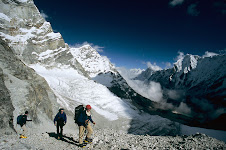





.jpg)

.jpg)


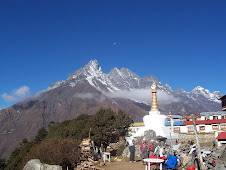

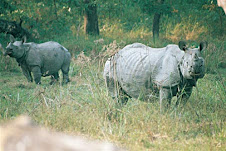




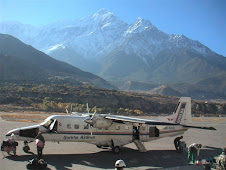




.jpg)

.jpg)
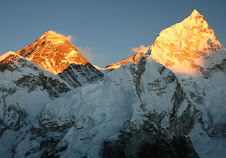





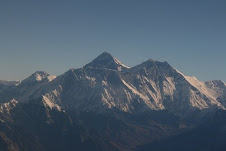
+-+Pokhara.jpg)
.jpg)

.jpg)


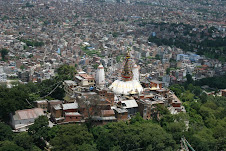






No comments:
Post a Comment